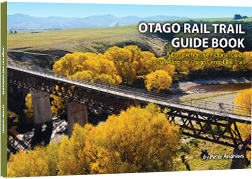Our Recommendation: Day 1/Night 1 ( start Clyde finish Omakau/Ophir)
The Intercity bus from Queenstown drops you in Clyde. With a earlyish start and, of course, depending on fitness and cycling skills or whether your hire bike is electric assist, it’s not overstretching to book your first night’s accommodation at Omakau/Ophir.
If you arrive in the afternoon we suggest staying in historic and quaint Clyde or Alexandra and then following our advice above for Day 1/Night 1 on the Otago Central Rail Trail.
Some things to look forward to on your first day at our Muttontown viaduct, the Manuherikia River and the famous Tiger Hill.






